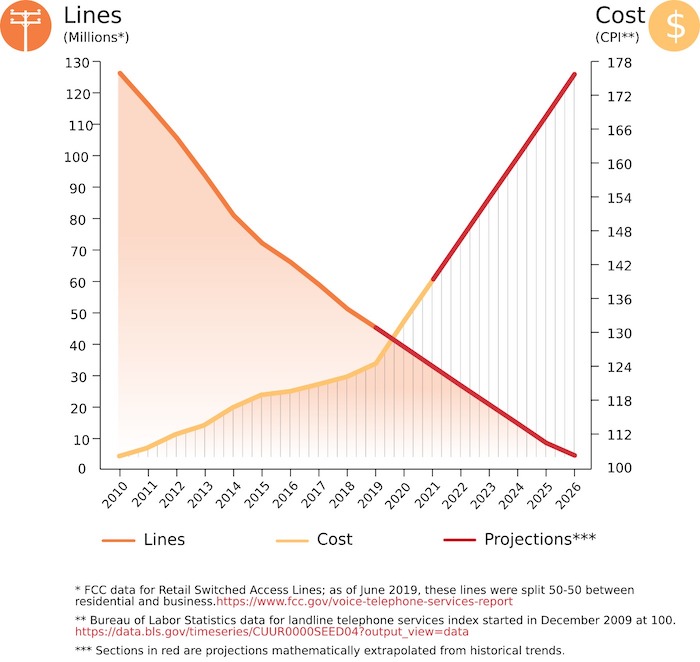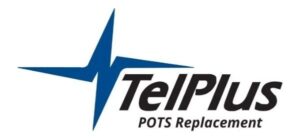8 Reasons to Replace POTS Lines

Table of Contents
POTS Lines were the cornerstone of communication for many years. They utilized copper wires to establish connections and facilitate communication, serving as a reliable lifeline for businesses globally. However, with the fast-paced evolution of technology, POTS lines have gradually become less effective in meeting the dynamic demands of contemporary businesses.
They are now fading into the annals of communication history, replaced by more efficient and feature-rich digital POTS replacement technology. If you’re reading this article, you’re likely considering replacing your POTS Lines. Doing so will have many benefits, which we will outline below.
What are POTS Lines?
POTS Lines, or Plain Old Telephone Service lines, are the conventional telephone service providing voice communication through copper analog lines. Businesses and individuals use them extensively to connect and communicate. However, technological advancements have rendered these lines somewhat obsolete, creating a need for more efficient and versatile digital alternatives.
Benefits of POTS Line Replacement For Businesses
1 – Major Telcom Providers Are No Longer Legally Required To Service POTS Lines
The deadline to replace traditional copper analog POTS Lines is already behind us, but there’s no need to worry if you’re still relying on them. The FCC POTS Lines Forbearance Order 19-72A1 marks an ‘end-of-life’ phase for these lines, signaling an urgent need for businesses to transition to newer communication systems. Importantly, this regulation means that essential services still depending on POTS lines, like security or life-saving emergency communication systems, must be replaced to ensure continuity of service.
Major telecommunications carriers like AT&T, Windstream, Verizon, Lumens, and smaller resellers are no longer legally obliged to service POTS Lines. The implications of FCC POTS Lines Forbearance Order 19-72A1 for businesses are far-reaching. For instance, telecommunications carriers are increasing pricing for existing POTS lines between 75% – 200% in a concentrated effort to drive consumers away from the aging POTS infrastructure. Furthermore, the service support for these lines is dwindling. The telecommunication carriers are no longer required to service POTS Lines, effectively making them a relic of the past. This means you will pay more for the lines monthly and deal with outdated technology that no longer benefits from regular maintenance.
The chart below demonstrates how the cost to maintain POTS lines increases as the amount of POTS lines decreases.

2 – Save Money Month to Month
Traditional phone lines carry substantial costs in terms of installation and maintenance, not to mention additional charges for long-distance calls and advanced features. Conversely, digital POTS line replacement technologies operate over the internet, eliminating the need for costly physical infrastructure. This change can significantly reduce your monthly phone bills.
What’s more, digital devices’ scalability allows businesses to add or remove lines as required without incurring additional costs. This level of flexibility is especially beneficial for growing businesses that need to scale their operations quickly and cost-effectively. The potential savings here are substantial, with companies saving up to 60% each month on communication costs.
3 – Enhanced Features
The modern communication landscape demands more than just voice calls. This is where POTS lines fall short and digital technologies excel. Modern technologies offer various advanced features, such as auto attendants, call queues, conference calling, call forwarding, call routing, voicemail, video conferencing, and more. The limitations of copper analog lines mean that such integrations simply aren’t possible with POTS lines.
However, by replacing your POTS lines with digital alternatives, your business can leverage these features to improve operational efficiency, enhance customer service, and foster greater collaboration among team members. For instance, call forwarding ensures that important calls are never missed, automatically routing them to multiple devices or numbers as needed.
4 – Greater Flexibility & Mobility
One of the main advantages of replacing POTS lines with digital alternatives is the flexibility and mobility they offer your business. With digital communication technology, employees can make and receive calls from anywhere, provided they have an internet connection. They can use their laptops, smartphones, or other devices, effectively transforming any location into a workspace. This flexibility allows businesses to embrace remote work and other flexible work arrangements, enabling employees to stay connected and productive regardless of where they are.
5 – Your Business Will Become More Scalable
Scalability is a critical factor for any growing business. With their copper analog infrastructure, traditional POTS lines pose limitations to this growth due to their physical restrictions and need for advanced features. By replacing POTS lines with digital devices, you’re adopting a technology that won’t restrict your growth. The features of these digital devices will do the opposite – they’ll drive your business forward! The minimal infrastructure needed for these devices compared to POTS lines allows your business to expand its communication capabilities effortlessly, thereby supporting growth and development.
6 – Improved Call Quality
Although POTS lines are reliable, they’re also prone to quality issues such as noise and interference. Modern technologies, on the other hand, can offer superior call quality. High-quality audio is a significant advantage of our digital devices over POTS lines. VoIP uses digital transmission to eliminate the static, background noise, and other audio issues commonly associated with traditional phone lines. Crystal-clear audio quality facilitates effective communication and enhances the overall customer experience. This leads to improved customer satisfaction and better business outcomes.
7 – Enhanced Business Continuity
Business continuity is of paramount importance. Initially, FCC regulations mandated telephone carriers to absorb maintenance and repair costs, ensuring the continuity of the network. But as technology evolved and the network aged, so did the copper lines central to the connection. This resulted in more frequent outages and disruptions in service.
However, the advent of VoIP and digital solutions changed the scenario. With their built-in geographic redundancy and failover capabilities, these new technologies offer even greater reliability. If one data center experiences an outage or significant weather event, another is ready to manage the traffic seamlessly, ensuring uninterrupted service.
8 – Future Proofing
There’s no question that POTS lines are becoming a thing of the past. With the FCC POTS Lines Forbearance Order 19-72A1 enforcement, POTS lines will no longer receive service from telecom providers. Replacing your POTS lines is a proactive step towards future-proofing your business, helping you stay ahead of the curve and remain prepared for future technological advancements.
Get Started With Replacing Your Business’ POTS Lines
Replacing POTS lines offers several benefits for businesses, from significant cost savings to enhanced features, greater flexibility, improved scalability, superior call quality, enhanced business continuity, and future-proofing. Don’t let outdated technology hold your business back. It’s time to embrace the digital age and explore digital POTS line replacements’ advantages.
Ready to make the switch? Start your journey today by reaching out to us on our contact page. Our team of experts will be happy to guide you through the process and answer any questions.
FAQ About Reasons To Replace POTS Lines
Yes, POTS lines are being phased out. The Federal Communications Commission’s (FCC) POTS Lines Forbearance Order 19-72A1 has marked the end-of-life for traditional analog POTS line systems. Telecom providers are no longer legally required to service these lines, pushing businesses to seek digital alternatives.
POTS line replacement refers to the process of replacing traditional POTS lines with modern digital or Voice over Internet Protocol (VoIP) systems. These replacements offer superior call quality, advanced features, cost savings, and more scalability.
POTS lines are expensive due to their infrastructure. They require copper wiring which is costly to install, maintain, and scale. Additionally, there are extra charges for long-distance calls and advanced features. On the other hand, digital POTS replacements operate over the internet, reducing these costs significantly.
Yes, following the FCC POTS Lines Forbearance Order 19-72A1, telecom providers, including Verizon, are no longer required to service POTS lines. This has led to these providers increasing POTS line costs to encourage customers to transition to digital or VoIP systems.
The cost of a POTS line can vary depending on the location and the provider. However, due to the FCC’s Order, telecom carriers have been increasing the pricing for existing POTS lines between 75% – 200%. On the other hand, digital POTS line replacements can lead to significant savings.
The FCC’s POTS Lines Forbearance Order 19-72A1 effectively ushers in an end-of-life scenario for traditional analog POTS Line systems. According to this mandate, telecommunications carriers are no longer legally required to service POTS Lines. This encourages the switch to more modern, digital systems.
